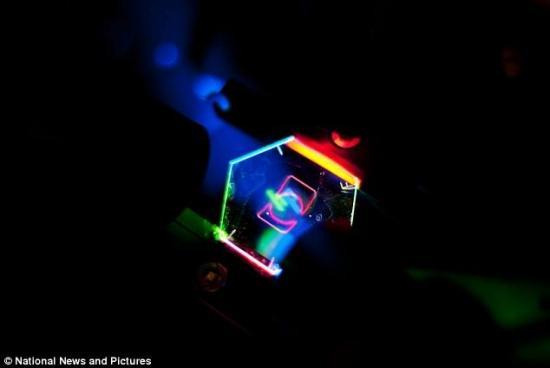
Our cell phones started out as simple, mobile ways to stay in touch with one another through voice calls. Not long after, text messaging was introduced into the mix. Even more quickly after that we started using the internet in our phones. Flip phones turned to messaging phones and messaging phones turned into smartphones. As smartphones continue to evolve the matter of whether your phone can get decent reception or not has seemingly moved to the back burner as we become more concerned with how graphically advanced our phones are: Can I view videos in HD? Can I play graphically challenging games? If it is in HD, how clear is it? For the most part, our phones and the displays they use are only viewable in 2D, but 3D was once the hope of the future for many when it comes to mobile devices.
It seems to me like the 3D dream was never really achieved – not in the way we wanted it to, anyway. There were a few releases of smartphones whose main feature was a “3D” display, but the 3D was not the same 3D that some of the phones made it seem like it would be. For example, the HTC EVO 3D commercial made it seem like the images would have a real 3D "you-could-practically-touch-it" effect - the images popped right off the screen. Somebody who saw those commercials and decided to head to the store to see the device for themselves would only end up disappointed though; the quality could only be described as being hardly better than 1980's hologram card you'd find in a cereal box. You move the screen just a little too far in the wrong direction and the entire image just looks like a bunch of crazy colors. The EVO 3D's 3D display was probably one of the most played up gimmicks I've ever seen in a smartphone, but the redeeming qualities of the device (newer version of Android, Sense 3.5, dual-core processor) is what kept it alive for longer than it really should have been.
The EVO 3D was probably the most notable attempt at trying to bring the future to us with 3D displays, but there have been other attempts as well. LG tried to get in on the action by releasing the LG Optimus 3D, which used the same system for creating their 3D images as HTC did - two 5-megapixel cameras on the back side of the device. Needless to say, the quality was the same and there was nothing to write home about. Samsung, Motorola, and Sharp all released similar devices in other parts of the world only to see the same abysmal result - nobody really wanted that kind of 3D.
But perhaps things are about to change thanks to a company who decided to withdraw from the smartphone industry not all that long ago, and that would be our friends at HP.
HP has taken the main issue with our broken version of 3D and fixed it. The biggest problem with previous attempts at 3D displays was that while the display did produce 3D images it was only using a horizontal parallax. That means that the "3D" effect only came from the left and right sides. Move your head too far either way and that's what broke the effect. As a result, HP has decided to take things to the next level with the seemingly forgotten 3D market and make a 3D display that allows you to view a full 3D image from almost all angles - all without 3D glasses. The full 3D images appear to protrude about one centimeter in front to one centimeter behind the image; you will actually be able to move your head around the screen and see different parts and angles of the image. It's nearly a holographic display. Now that's the 3D I'm talking about.
The prototype from HP looks promising, and although it's not specifically said that it's been tailored for smartphones it's been speculated that the small 6-inch size of the prototype suggests that using this enhanced 3D display is not out of the question for mobile technology. The only element that's missing now is 3D content - no matter how cool a function or feature is, you can't use it much if nobody produces content for it.
I had given up hope for 3D displays after I had used my EVO 3D. I hated showing customers exactly what the 3D looked like in person because almost every single one walked away with a different device (which explains the extremely short shelf life). However, HP has caught my attention and if they can pull this off then I can easily see a surge of people wanting to get their hands on a mobile device that features this type of advanced 3D display - I think this is the display people would have been sold on with the older "3D" devices.
Readers, what do you think of 3D displays? Does this new type of display from HP interest you, or do you think this will turn out just like the others before it and be dismissed as just another gimmick? Let me know your thoughts in the comments!